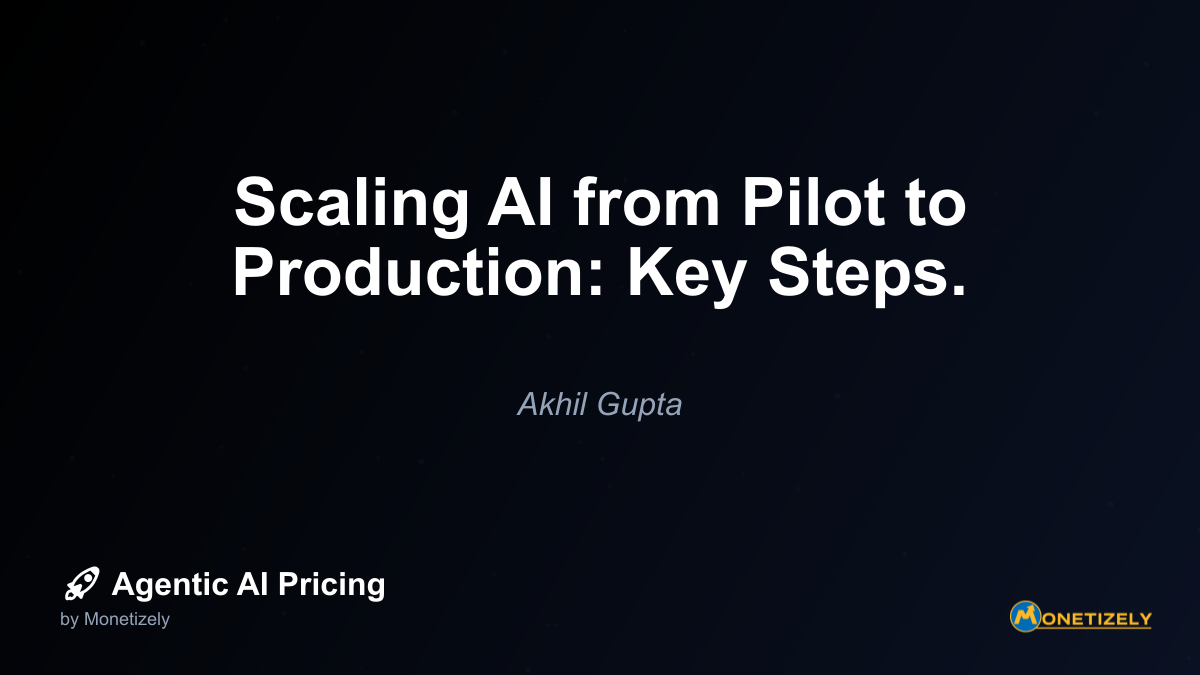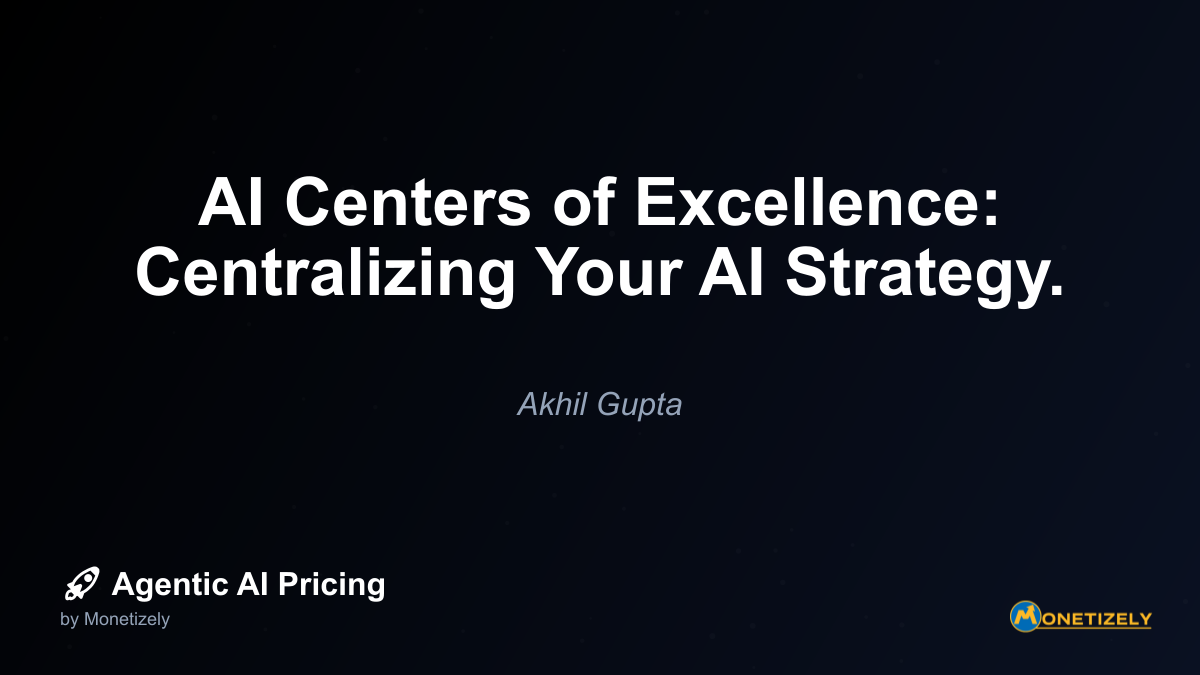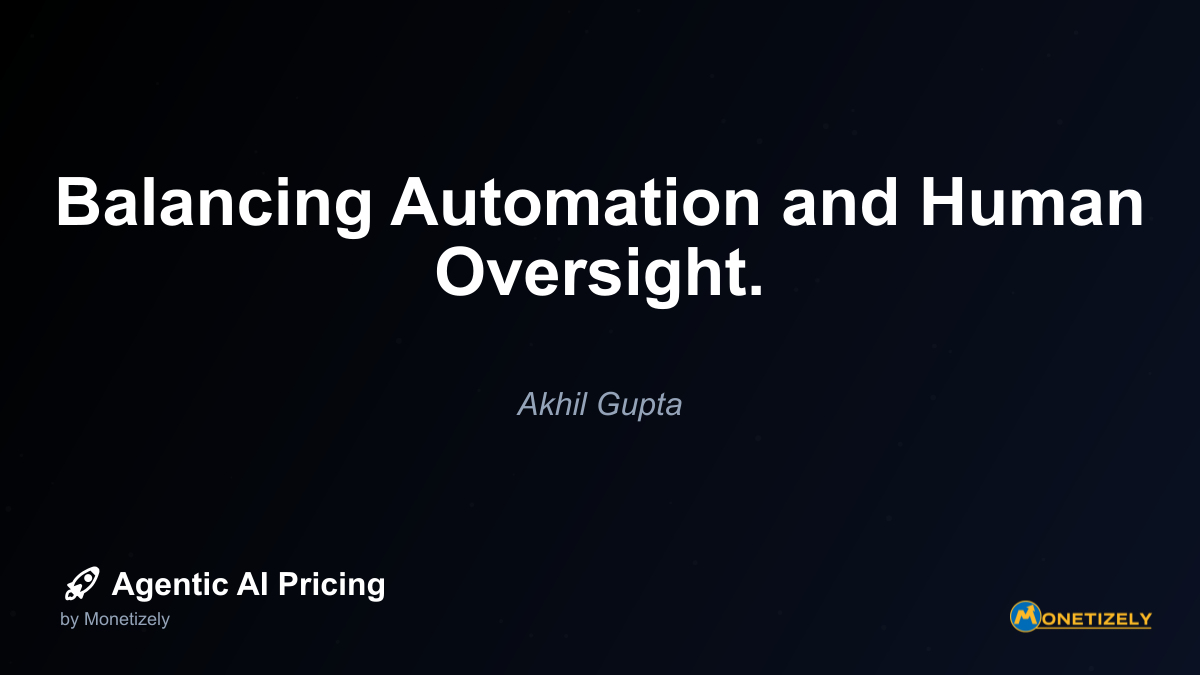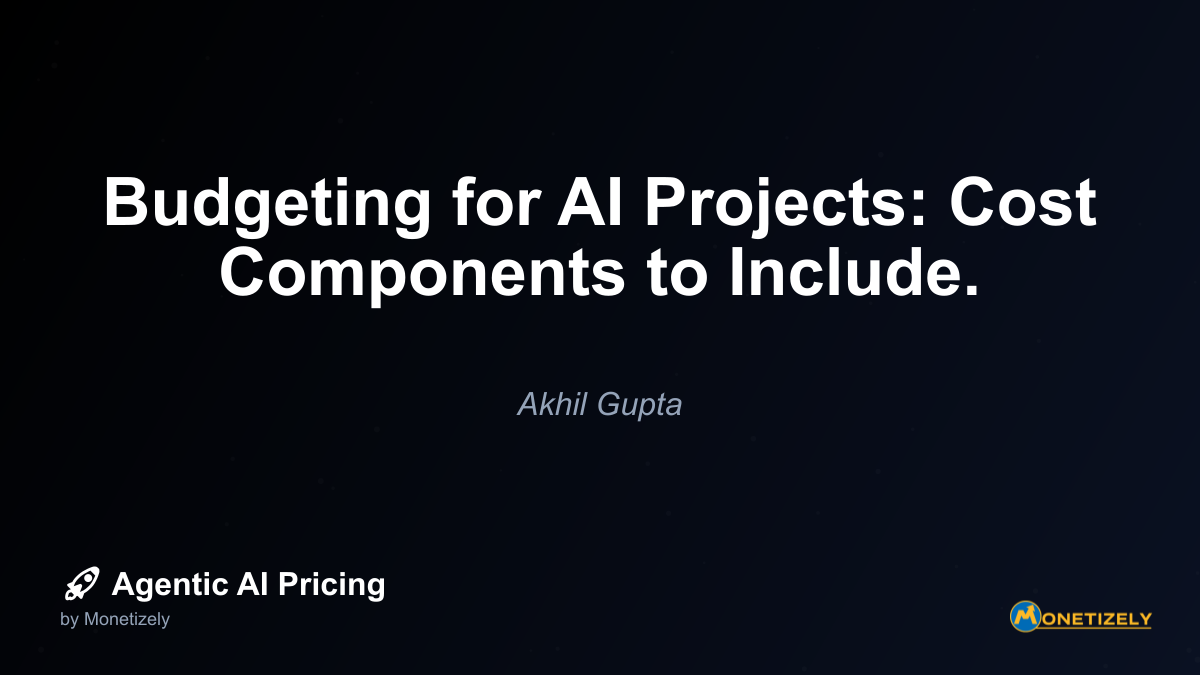· Akhil Gupta · Implementation Strategies · 8 min read
Scaling AI from Pilot to Production: Key Steps.
AI and SaaS Pricing Masterclass
Learn the art of strategic pricing directly from industry experts. Our comprehensive course provides frameworks and methodologies for optimizing your pricing strategy in the evolving AI landscape. Earn a professional certification that can be imported directly to your LinkedIn profile.

Scaling artificial intelligence solutions from pilot to production represents a critical juncture for organizations. After demonstrating value through initial experiments, companies face the challenging task of transforming promising prototypes into enterprise-grade systems that deliver consistent value. This transition requires careful planning, appropriate infrastructure, and organizational alignment to ensure success.
The Gap Between Pilot and Production
The journey from pilot to production is where many AI initiatives falter. According to research by Gartner, only about 15% of AI projects successfully make it into production. This stark reality highlights the complexity of scaling AI solutions beyond controlled environments.
For agentic AI systems—those capable of autonomous decision-making and action—this challenge is even more pronounced. The stakes are higher as these systems often interact directly with customers, manage critical business processes, or make consequential decisions without human intervention.
Successful scaling requires addressing several dimensions simultaneously: technical infrastructure, organizational readiness, governance frameworks, and economic considerations. Let’s explore the key steps organizations should take to bridge this critical gap.
Assessing Pilot Results: The Foundation for Scaling
Before scaling begins, a thorough assessment of the pilot results is essential. This evaluation should go beyond simple metrics to understand the true potential for organizational impact.
What to Evaluate in Your Pilot
Performance metrics: How well did the AI system perform against predefined KPIs? Was accuracy, speed, or efficiency improved?
User feedback: What did users—both operators and beneficiaries—say about their experience? Were there unexpected pain points or benefits?
Technical stability: How reliable was the system? Were there unexpected outages, edge cases, or integration challenges?
Economic validation: Did the pilot validate the business case? What was the actual ROI compared to projections?
Scalability indicators: What limitations or bottlenecks emerged that might affect scaling?
This assessment provides the foundation for scaling decisions. It helps identify which aspects of the pilot worked well and should be maintained, and which require adjustment before wider deployment.
Developing a Graduated Scaling Strategy
Rather than moving directly from pilot to full-scale deployment, successful organizations typically implement a graduated approach.
Phased Implementation Approach
Controlled expansion: After the initial pilot, expand to a slightly larger user group or additional use cases while maintaining close monitoring.
Departmental deployment: Scale to an entire department or functional area, allowing for optimization within a defined boundary.
Cross-functional integration: Extend the solution across departmental boundaries, addressing integration challenges.
Enterprise-wide implementation: Roll out the solution across the organization with standardized processes.
This graduated approach allows organizations to identify and address scaling challenges at each stage before they become enterprise-wide problems.
Building Scalable Technical Infrastructure
The technical infrastructure that supports a pilot is rarely sufficient for production. Scaling requires robust, flexible architecture designed for enterprise demands.
Key Infrastructure Considerations
Compute resources: Production AI systems, especially those involving complex models, require significant computational power. Organizations must determine whether on-premises infrastructure, cloud resources, or a hybrid approach best meets their needs.
Data pipeline scalability: As usage increases, data volumes grow exponentially. Pipelines must handle increased throughput without degradation.
Model serving infrastructure: The system for delivering model predictions must scale to handle peak loads while maintaining performance.
Integration capabilities: Production AI systems typically connect with multiple enterprise systems. These integrations must be robust and maintainable.
Monitoring and observability: As systems scale, visibility becomes more critical. Comprehensive monitoring allows teams to identify and address issues before they impact performance.
Technical Debt Considerations
Many pilot projects accumulate technical debt—shortcuts taken to quickly demonstrate value. Before scaling, organizations should address this debt to prevent it from undermining production systems.
Common technical debt in AI pilots includes:
- Hardcoded parameters that should be configurable
- Manual processes that should be automated
- Insufficient error handling
- Lack of proper documentation
- Inadequate testing frameworks
Resolving these issues before scaling prevents them from becoming magnified in production.
Establishing Governance and Operational Frameworks
As AI systems move from controlled pilots to production environments, robust governance becomes essential—particularly for agentic AI that makes autonomous decisions.
Governance Components for Production AI
Model governance: Processes for approving, versioning, and updating models in production.
Data governance: Frameworks for ensuring data quality, privacy, and compliance throughout the AI lifecycle.
Decision rights: Clear delineation of who can make changes to production systems and under what circumstances.
Ethical guidelines: Principles governing how AI systems should behave, especially in edge cases.
Compliance frameworks: Mechanisms to ensure adherence to relevant regulations and standards.
Operational Considerations
Beyond governance, operational frameworks ensure day-to-day reliability:
Service level agreements (SLAs): Defined expectations for system performance, availability, and responsiveness.
Incident response protocols: Procedures for addressing system failures or unexpected behaviors.
Change management processes: Structured approaches to implementing updates without disrupting business operations.
Support structures: Tiered support systems to address user questions and technical issues.
These operational frameworks transform AI from experimental technology to business-critical infrastructure.
Pricing Considerations for Scaled AI Systems
As agentic AI systems scale from pilot to production, pricing strategies must evolve to reflect their expanded value and usage patterns. This is particularly important for software vendors but also relevant for internal cost allocation in enterprise deployments.
Evolving Pricing Models
Usage-based pricing: As systems scale, usage-based models often become more accurate and predictable. Organizations can refine pricing tiers based on actual usage patterns observed during the pilot.
Value-based pricing: With more data on actual business impact, pricing can be more closely aligned with demonstrated value rather than theoretical benefits.
Hybrid models: Many organizations find that hybrid pricing models—combining subscription fees with usage components—provide the right balance of predictability and alignment with value.
Cost optimization: Scale often brings opportunities for cost efficiencies through improved resource utilization, better negotiating positions with vendors, or architectural optimizations.
Economic Considerations for Internal Deployments
Even for internal deployments, economic considerations remain important:
Cost allocation: How will costs be distributed across departments or business units?
ROI tracking: What mechanisms will track and validate the return on investment as the system scales?
Budget planning: How will ongoing costs be incorporated into departmental and organizational budgets?
These economic considerations ensure that scaling decisions remain grounded in business reality rather than technological enthusiasm.
Building Organizational Capabilities
Technical infrastructure alone cannot ensure successful scaling. Organizations must develop the capabilities to support, maintain, and derive value from production AI systems.
Training and Skill Development
User training: As the system reaches more users, scalable training approaches become essential. This might include self-service learning resources, train-the-trainer models, or embedded guidance within applications.
Technical skill development: Teams responsible for maintaining production systems need deeper skills than those who developed pilots. This often requires specialized training in MLOps, performance optimization, and enterprise integration.
Leadership education: Executives and managers need sufficient understanding to make informed decisions about AI investments and governance.
Organizational Structure Considerations
As AI moves from experiment to core capability, organizational structures often need adjustment:
Centers of excellence: Many organizations establish AI centers of excellence to provide expertise, governance, and best practices across the enterprise.
Embedded AI teams: Alternatively, AI expertise may be distributed throughout the organization, embedded within business units.
Hybrid models: Most successful organizations adopt hybrid approaches, combining centralized expertise with distributed implementation teams.
The right structure depends on organizational culture, existing capabilities, and strategic priorities.
Managing Change and Adoption
Even the most technically sound AI system will fail if users don’t adopt it. Change management becomes increasingly important as systems scale beyond early adopters.
Effective Change Management Approaches
Stakeholder engagement: Identify and engage key stakeholders at each scaling phase, addressing their specific concerns and priorities.
Communication strategy: Develop clear, consistent messaging about what the AI system does, how it benefits users, and what changes to expect.
Success stories: Document and share early successes to build momentum and demonstrate value.
Feedback loops: Establish mechanisms to collect and act on user feedback throughout the scaling process.
Incentive alignment: Ensure that individual and team incentives align with successful adoption and use of the AI system.
Addressing Resistance
Resistance to AI adoption often increases as systems move beyond pilots to affect more people’s daily work. Common concerns include:
- Fear of job displacement
- Distrust of AI decision-making
- Disruption to established workflows
- Learning curve challenges
- Perceived loss of autonomy or control
Addressing these concerns directly, with empathy and practical solutions, is essential for successful scaling.
Measuring and Optimizing at Scale
As AI systems scale, measurement and optimization approaches must evolve to capture the full impact and identify opportunities for improvement.
Evolving Measurement Frameworks
Expanded metrics: Move beyond the focused metrics of the pilot to measure broader organizational impact.
Automated reporting: Implement dashboards and automated reporting to track performance without manual effort.
Predictive indicators: Develop leading indicators that predict future performance or potential issues.
Continuous Optimization Approaches
Production AI systems require ongoing optimization to maintain and improve performance:
Automated retraining: Implement processes for regularly retraining models with new data.
A/B testing frameworks: Develop capabilities to test variations and improvements in a controlled manner.
Performance monitoring: Continuously monitor system performance to identify degradation or drift.
User experience optimization: Regularly assess and improve the user experience based on feedback and usage patterns.
These measurement and optimization approaches ensure that AI systems continue to deliver value as they scale.
Conclusion: From Project to Capability
Successfully scaling AI from pilot to production represents more than just technical implementation—it’s about transforming AI from a project to an organizational capability.
Organizations that successfully navigate this transition:
- Take a deliberate, phased approach to scaling
- Build robust technical infrastructure designed for enterprise needs
- Establish comprehensive governance and operational frameworks
- Align economic models with business value
- Develop organizational capabilities to support production AI
- Manage change and adoption proactively
- Continuously measure and optimize performance
By addressing these dimensions simultaneously, organizations can bridge the gap between promising pilots and production systems that deliver sustainable value.
As agentic AI continues to evolve, the ability to effectively scale from pilot to production will increasingly differentiate leaders from followers in the AI landscape. Those who master this transition will be positioned to capture the transformative value these technologies promise.
Co-Founder & COO
Akhil is an Engineering leader with over 16+ years of experience in building, managing and scaling web-scale, high throughput enterprise applications and teams. He has worked with and led technology teams at FabAlley, BuildSupply and Healthians. He is a graduate from Delhi College of Engineering and UC Berkeley certified CTO.
Pricing Strategy Audit
Let our experts analyze your current pricing strategy and identify opportunities for improvement. Our data-driven assessment will help you unlock untapped revenue potential and optimize your AI pricing approach.




